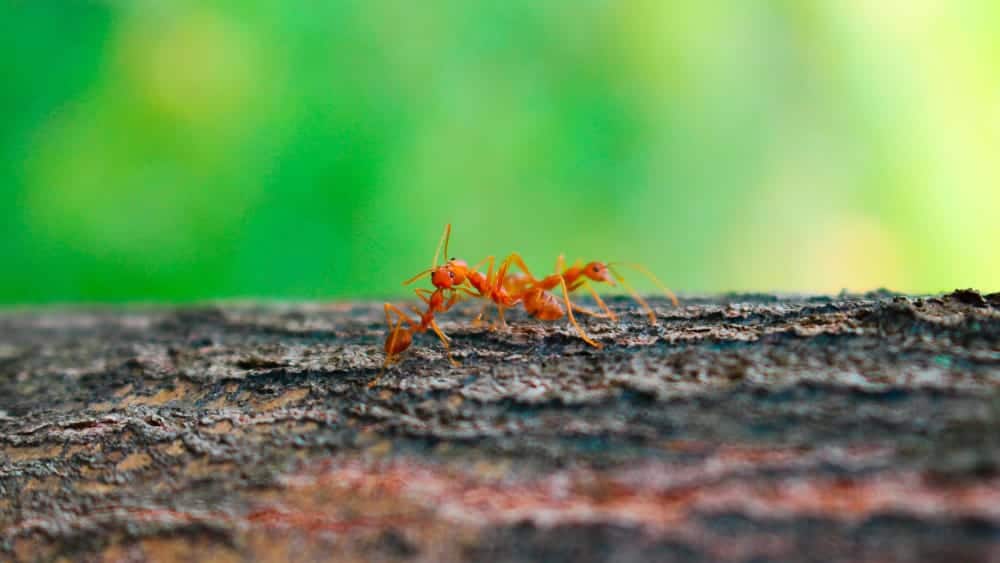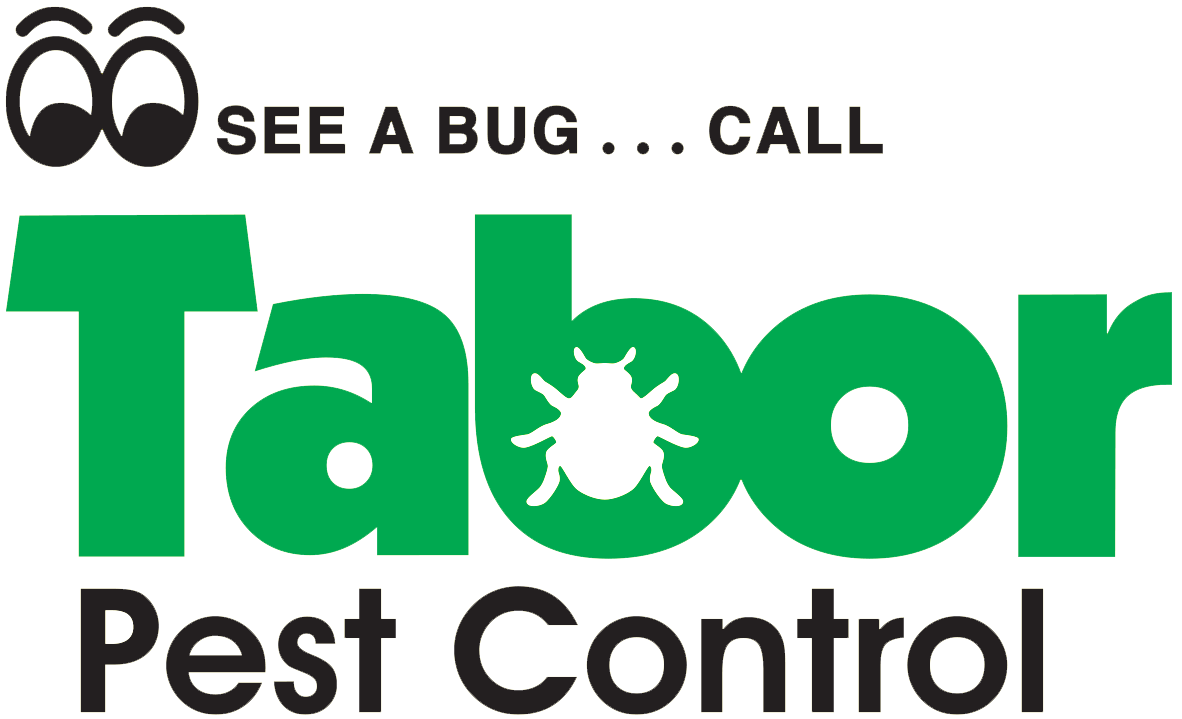Common Pests In Southern Alabama & Georgia And How To Identify Them

Identifying common pests can be difficult for property owners as they come with multiple species. Any incorrect identification of any insect, mammal, microbe, or organism could damage your property and health severely.
Incorrect pest identification could cost you your time, money, and energy.
That’s what we at Tabor Pest Control specialize in, where our experts help you identify the kind of pest that’s infesting your property and find an effective way to terminate it.
What’s the importance of identifying pests?
One of the common pests in the south (especially Georgia) is ticks, external parasites that feed on mammals’ blood. There are 15 species of ticks, and finding what is commonly found in properties can be challenging.
For example, the American Dog Tick is the most active spring, summer, and fall species. Wooded paths, parks, and farm pastures are their common dwelling areas.
Now, if you’re not aware of how to differentiate this particular species from the rest, you won’t be able to know to what extent they are dangerous, how they transfer, how they live, and how they interact with their environment.
Correct identification of pests helps find different strategies to manage, control, and terminate a species.
Common pests in Southern Alabama
Many pests dwell in Alabama, and in the peak pest season, it feels like all that’s around you are just pests.
Alabama’s moderate temperature is ideal for all kinds of bugs, insects, and pests to survive and make their colonies all year round.
Alabama is ranked 8th in states with the most bugs present. Here are some of the common pests you’ll find in Alabama:
1. Ants

Ants are the most common invaders in your house and are recognized by their different colors of red, black, or brown. The most common species found in southern Alabama include:
- Little black ants
- Argentine ants
- Fire ants
- Acrobat ants
Danger level
Ants might seem harmless, but they can be dangerous for spreading diseases. As they roam in the dirt, they can easily contaminate food and various surfaces in your home with bacteria and pathogens.
You must have heard fire ants being named the most dangerous as their bite is painful and hurts the most. They are aggressive, and once they sting, their venom is strong enough to produce an allergic reaction, sometimes even becoming life-threatening.
Where to find them?
Ants can invade your home through various sources, such as attacking your trash, pest house, gardens, compost, and any moist area.
Since these are small, they can quickly get through the tiniest cracks in your property and invade your home, trying to build their nest.
For fire ants, you have to look for open and vast sunny areas as they love to reside in such places, but the Argentine ants prefer the exact opposite, which is moist areas, so keep a lookout under sinks.
How to get rid of them?
We at Tabor Pest Control have experts who can identify which kinds of ants dwell in which secret spots of your house. Contact us to get a free quote.
2. Bed Bugs

These blood-feeding pests not only exist on your bed but can be found in various other places where they can hide for up to a year without feeding if the temperature is just right and build their colony.
Danger level
Of course, bed bugs are dangerous as they bite warm-blooded mammals and can leave you feeling extremely itchy all over or cause allergies.
Another added mess they make is ruining your sleep and making you feel uncomfortable and worried.
Where to find them
We know beds are a common place for bed bugs to exist, but other places include:
- Wooden furniture, walls, and floor
- Behind wall hangings, clocks, and pictures
- Behind wall voids
- Electrical outlets and electronics
- In your pending dirty laundry
Your family, you, and your pets could also come in contact with bed bugs and bring them over from various places such as relatives’ or friends’ homes, movie theatre seats, and any other public spaces.
You can identify their traces by looking for the skins they shed after sometimes blood stains on clothes and mattresses and feeling unexplainable itchiness whenever you sit somewhere or sleep.
How to get rid of them
We have experts who can identify if bed bugs are dwelling in which secret spots of your house. Contact us to get a free quote.
3. Cockroaches
These most popularly feared pests can fly as quickly as they can crawl. Cockroaches are the world’s most resilient and highly adaptable creature, and can survive and grow in any corner of your house if you don’t eliminate their species.

There are different kinds of cockroaches, including species that share the same roof as you:
- Smokey brown cockroach
- Oriental cockroach
- German cockroach
- Asian cockroach
Danger level
Cockroaches can be pretty dangerous because they spread diseases such as Salmonellosis, Dysentery, and E.coli.
Since they can travel through gutters and survive anywhere, they carry various pathogens and bacteria infecting your surroundings.
Their shed skin and excrement also cause an allergic reaction in children.
These pests are also good at destroying your property as they can eat through anything in your home, from wallpaper to rugs, so you need to eliminate them.
Where to find them
These pests can enter through any source, from delivery parcels to traveling through drains and sinks and popping up in your bathrooms in the middle of the night.
They mostly travel through the night and come up to find their food during the night, which is another reason you wouldn’t know they exist in your home.
They would mostly hide in drains or in cracks around your home. If you tend to leave food open along with kitchen cabinets, it’s like a free buffet for them and gets inside your pantry as well.
How to get rid of them
We have experts who can identify if cockroaches are dwelling in which secret spots of your house. Contact us to get a free quote.
4. Fleas and ticks
Fleas can jump easily from one spot to another and travel this way to invade your home, but ticks can’t do the same, and they crawl and then attach themselves to a food source.
But both have something in common: they feed on blood.
Warm and humid weather is essential for their survival so they can multiply quickly. While ticks prefer to feed on human blood, fleas don’t prefer humans.
But food is still food, so it might still count as food to them at the end of the day.
Danger level
Both fleas and ticks spread lots of diseases, including causing allergic reactions.
Flea saliva is a common source of an allergic reaction, and their bite may cause dermatitis making us feel itchy and uncomfortable.
They can also infect with parasitic tapeworms, so the danger level is pretty high.
Ticks, on the other hand, may be responsible for causing the following diseases:
- Lyme
- Rocky Mountain spotted fever
- Tularemia
- Babesiosis
- Ehrlichiosis
Where to find them
Most animals, such as pets, tend to bring ticks or fleas to our home if they’re overlooked and not given proper cleaning or bath, but any animal might also carry it, such as rats.
Wild animals should, therefore, never be played with as there’s a high possibility of them carrying both ticks and fleas.
When talking about fleas, you can find them surviving indoors as easily as outdoors, but ticks can’t breed indoors and can only survive outside.
Fleas tend to hide in dark shady areas such as bushes, thrown-away furniture, and any garbage pile. Ticks are likely found in tall grass, under leaf piles, wooded pathways, or ditches.
You can find fleas in bedding, around baseboards, inside rugs, carpets, and drapes when indoors.
You won’t even know about their eggs hidden away which only become active when they find the right temperature to hatch. Therefore, proper treatment and timely cleanliness of the house are required.
How to get rid of them
We have experts who can identify if ticks and fleas are dwelling in which secret spots of your house. Contact us to get a free quote.
5. Mosquitoes
One of the common pests around us is mosquitoes, the most annoying. They feed on our blood, and that’s how they multiply.

Despite us killing them easily with even our bare hands, a bite from the wrong mosquito species is enough to get us sick and even lose our life.
Danger level
Yes, their bites are itchy and painful. Still, they cause more harm than that by spreading numerous diseases through their bites, including the eastern equine encephalitis virus, the St. Louid encephalitis virus, and more.
They are quick to multiply and always travel in a herd, so you’ll find a bunch of them dwelling around your house or inside. They also carry parasitic heartworms, which are transmissible to dogs and cats.
Where to find them
Leftover water, which is unused, is a breeding ground for mosquitoes that are used to lay eggs by the females and hatch into mosquitoes. So still water is a major source, including even a small ditch near your home or a pond nearby.
The more it rains, the more water is going to accumulate and cause a breeding ground. In Alabama, the humid temperature is highly favorable for their growth.
How to get rid of them
We have experts who can identify if mosquitoes are dwelling and in which secret spots around your house. Contact us to get a free quote.
6. Moths
You can identify moths as scale-covered winged pests with threadlike or feathery antennae. They might appear in different bright color patterns on their wings as well.
Danger level
The larval stage of the moth, a caterpillar, can be dangerous as they’re big eaters causing a lot of damage to their surroundings, including your property.
Of course, your plants are in danger, and if they latch on to the indoor plants, you’ll quickly find them half-eaten. Their danger level differs depending on their species. While some damage fabrics, others damage your pantry.
Where to find them
You can see traces of moths in your clothes and pantry full of food items, so you’ll have to pay attention to such things. Of course, not keeping your house clean is a significant factor in attracting moths to your home.
They seek dark, quiet areas to survive. You might commonly find them in kitchens, bathrooms, closets, basements, and attics.
How to get rid of them
We have experts who can identify if moths are dwelling and in which secret spots around your house. Contact us to get a free quote.
7. Rodents

Rodents include rats and mice, which are pretty commonly found dwelling in residential areas and around them. They are quite the survivors eating away at anything with their front teeth, so dwelling on our property is easier for them.
Danger level
Rats and mice survive year-long but can be dangerous in various ways. Not only do they eat away at your furniture, destroying your property, but they also share your food with you and thus share their diseases with you.
Their excrement is enough to make things contaminated, and they spread bacteria, disease-causing pathogens, and parasites to make people ill.
It’s easier to identify their colony from the rotten smell and their chew marks.
Since they chew away at anything, this includes electrical wires and pipes, which can cause major damage to your property.
Where to find them
You can most commonly find them in gardens, trash cans, compost areas, pet foods, and outside areas.
They can gnaw away at anything, so it’s easier for them to exist in your hard if it’s not maintained or kept clean, which then becomes an easy gateway to your house.
They tend to remain in dark and quiet areas, and their movements are quick to give them away. Outside they might live near hollow trees or any such cavity inside your home.
How to get rid of them
We have experts who can identify if rodents are dwelling and in which secret spots around your house. Contact us to get a free quote.
8. Spiders
This eight-legged creature is despised and feared by many, which is why it’s essential to remove its existence from your home. Common species which invade properties in Alabama include:
- Black widow spiders
- Brown widow spiders
- Wolf spiders
- Jumping spiders
- Cellar spiders
Danger level
Some species of spiders, such as black widow and brown widow spiders, are dangerous, and their venom is strong enough to create health issues. But then there’re other common household species too.
It’s normal for them to create their web in any place where their food, such as other insects, is available in plenty.
Where to find them
Though they prefer to stay outside, they mostly move inside when the temperature drops as their prey moves indoors.
Cellar spiders can be found living in basements and humid areas of a property.
How to get rid of them
We at Tabor Pest Control have experts who can identify which spiders are dwelling and in which secret spots around your house.
9. Stinging insects
Stinging insects have their stinger at the end of the abdomen or tail to get their prey or defend themselves.
Now they have some benefits, as they eliminate insects like mosquitoes and flies, but they are also dangerous.
Some of the species existing in Alabama include:
- Wasps
- Yellowjackets
- Bald-faced hornets
- Mud daubers
Danger level
Some species can be aggressive in nature and possess venom, which, when injected, is enough to cause serious allergic reactions. Their stings are pretty painful and cause damage on different levels.
Species like mud daubers might sting if they feel threatened, but wasps, yellow jackets, and hornets are aggressive and may sting multiple times regardless of that too multiple times.
Where to find them
If you have other insects living on your property, it will be an attractive point for stinging insects to build their homes for food purposes.
Properties with huge backyards and vast gardens are prone to insects living there for water and food.
Yellow jackets can be found in recycling bins, trash cans, and outdoor eating areas.
You can find scorpions seeking humid environments to thrive, so inside the home, they can be found in basements, bathrooms, laundry areas, sinks, and tubs.
Wasps, mud daubers, and bald-faced hornets can be found living in chimneys and wall voids.
How to get rid of them
We have experts who can identify which stinging insects are dwelling and in which secret spots around your house. Contact us to get a free quote.
10. Termites
How can we forget the biggest culprit behind destroying properties that all property owners fear more than anything?
Termites cause billions of dollars worth of damage each year in the country with their colonies.

They stay easily hidden inside the wood, and sometimes all that’s remained is a hollow piece of furniture.
Drywood termites and subterranean termites are famously found in Alabama, while southeastern drywood termite is found primarily in southern Alabama.
- The eastern subterranean termite comes in from February to May during the day.
- Formosan termite comes at night during late spring.
- The dark southeastern subterranean termite comes in between March and June during the day.
- The southeastern drywood termite comes at night during the spring season.
Danger level
Termites are a big issue in states like Alabama. Their colony eats away at your property from the inside, causing lots of damage; therefore, their elimination is quite popular amongst property owners.
Where to find them
Alabama’s humid and warm weather allows subterranean species to survive as they get the perfect temperature.
They live near the moist soil forming at the dead tree trunks and can easily follow into your house through the garden and backyard through soil tubes.
They can be found inside any wood or furniture you own, on the floors, or even behind walls. The subterranean species seek water-damaged or decaying wood but also ordinary pieces of wood.
How to get rid of them
We have experts who can identify which termite species dwell and which secret spots around your house. Contact us to get a free quote.
Common Pests in Southern Georgia
1. Ticks
There are 15 species of ticks existing in Georgia. The three species you could come in contact with are:
Blacklegged tick
- Blacklegged tick commonly lives in wooded areas. It feeds on various hosts, such as deer and humans. They are reddish-brown in color and are 1/8 of an inch in length.
- Mostly active in spring and fall seasons.
- Responsible for causing Lyme disease.
Lone star tick
- Least likely to be in contact with.
- About 1/8 of an inch in length and brown in color. Females have a white spot in the middle of their back.
- Most active from April till July.
American dog tick
- Live in wooded paths, parks, and farm pastures.
- Prefer to use dogs and humans as hosts.
- Reddish-brown in color with white and yellow markings. The males are about 1/8 of an inch long, and the females are a bit large.
- It can cause Rocky Mountain spotted fever.
- Most active in spring, summer, and fall.
2. Termites
Eastern subterranean termites are the ones you should look out for, and they live in large colonies and cause huge property destruction.
- The workers are creamy white in color and also blind.
- Soldiers are the same size but have elongated yellow heads and large jaws to protect the nest.
- Kings and queens are dark brown or black. They are pretty large and have two translucent wings, which usually are broken off and can be seen as a sign of termite infestation.
3. Stink bugs
- They are shaped as triangular with a shield on their back.
- Emit a foul smell.
- Less than 1 inch long and approximately 17mm.
- Generally brown or tan but can have coppery or bluish metallic patches on their heads and pronotum.
- It can be encountered during the fall or early spring.
4. Odorous house ants
- Common ants that invade properties in Georgia.
- About 1/8 inch long in length.
- When crushed, they give a rotten coconut smell.
5. Rats
Rats in Georgia can carry diseases such as murine typhus, leptospirosis, and salmonellosis. Chewing away electrical wires, pipes, and property damage is an added disadvantage.
6. Norway rats
- They are larger but with short tails than their body.
- They are 10-12 inches in length with a brown/gray color.
- They are commonly found in urban areas around the basements area.
7. Roof rats
- They are slightly smaller, and their tails are longer than their bodies.
- They are black in color and have lighter underbelly.
- They prefer warm and moist climates and so are hidden in attics.




